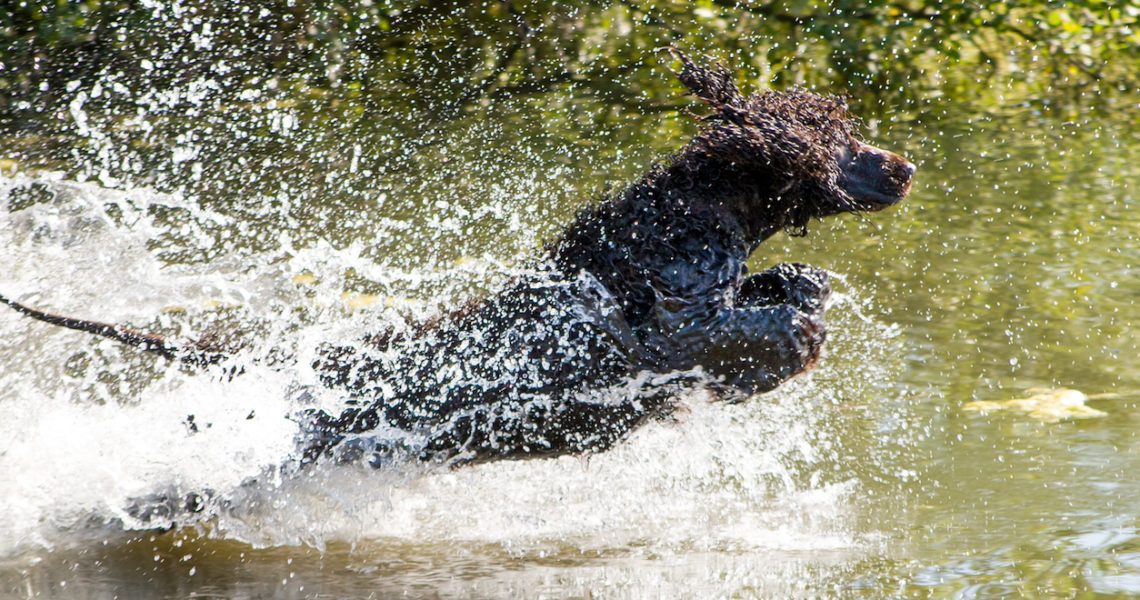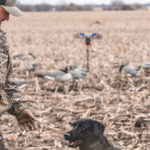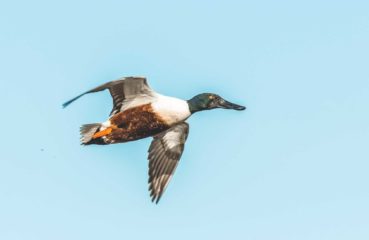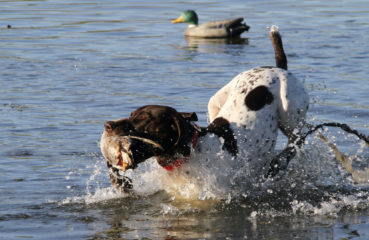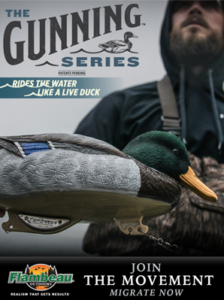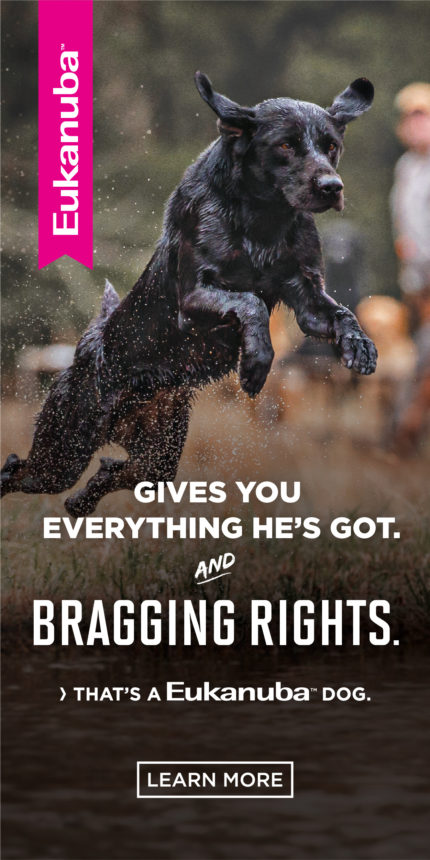Exploring the Irish Water Spaniel and the Nova Scotia Duck Tolling Retriever
Breaking the retrievers into four breed categories gives us the Chessies, Labs, and Goldens as the “flagship” retrievers – tops in popularity for all types of water, weather, and waterfowl. The second category gives us the Boykin and American water spaniels, specially designed for agile yet tenacious retrieving from small boats. The versatile breeds, developed to work on land or water to hunt, point, track, and retrieve, form the third category. Last are the “outliers,” two rare breeds with unique characteristics: the Irish water spaniel and the Nova Scotia duck tolling retriever.
The Irish Water Spaniel
For starters, the Irish water spaniel has also been called a whip-tail spaniel and a rat-tail spaniel . . . for good reason. Its tail is thick at the base with curls that quit after two or three inches. The rest of the tail hair is short and flat, accentuating how it tapers to the tip. Further setting the IWS visually apart from other retrievers is the topknot. A salon stylist’s dream, the IWS’s crown of loose ringlets tumbles fetchingly (yes, that’s a pun) over a smooth face framed by more curls on the ears. Abundant dense curls cover an undercoat and extend down the legs. On the plus side, this coat provides excellent water resistance and insulation similar to that of a Chesapeake Bay retriever coat. Also on the plus side, the IWS coat is considered hypoallergenic. While there’s no such thing as a totally hypoallergenic canine coat, the IWS sheds less and produces less dander than many breeds. On the negative side, cattail debris, burrs, grass awns, and marsh rush are drawn to those curls like a curious mallard to a spinning Mojo duck. Post-hunt grooming is mandatory.
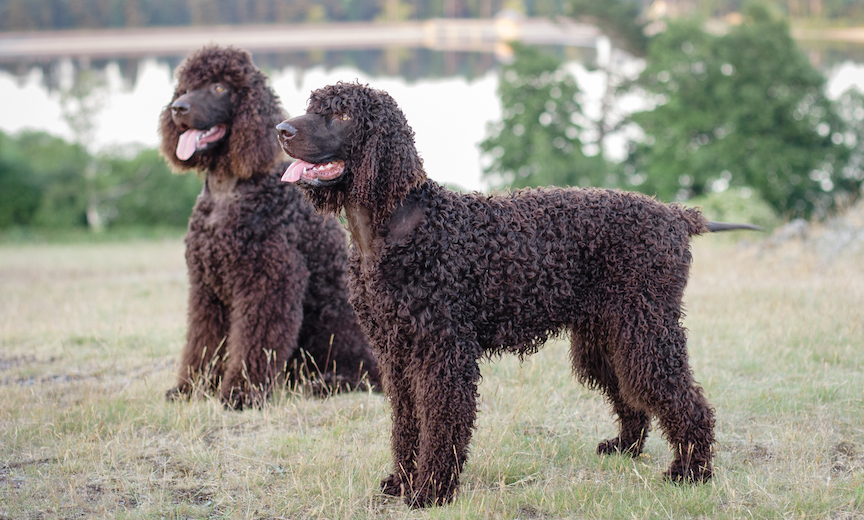
If any ancient breed bears similarity to the IWS it would be the Afghan hound with its topknot, smooth face, and curved tail. It is possible the Afghan hound (originally a hunting companion for royalty) and the IWS share common ancestry. The more recent IWS story seems to have begun about 400 years ago when paintings and accounts of “water spaniels” first appear. The Irish Water Spaniel Club of America explains that the breed as we know it now was developed in the mid-1800s from two distinct strains, one more prevalent in northern Ireland, one in the south. Today’s all liver, tightly curled IWS more closely resembles the “South Country Water Spaniel.”
Most Irish water spaniels have a keen nose, natural ability to mark downed birds, and outstanding water drive. Tallest of the spaniels, the IWS is sturdily built with strong musculature that is often obscured in groomer-happy photos that make them look like four-legged loofahs. The IWS is a smart dog, capable of independent thought in the field and on the water. Many IWS waterfowling stories revolve around the dog choosing its own route to retrieve rather than taking a straight line command.
The Nova Scotia Duck Tolling Retriever
The Nova Scotia duck tolling retriever stakes its unique visual claim in looking like a large fox: a smooth face, clean muzzle line, white markings and a medium length, orange-red coat that carries through to a full, feathered tail. This fox-like appearance is no accident. The toller, originally called the Little River duck dog, was developed to work like the now-extinct “cage” dog that imitated foxes and thereby lured ducks into special cages. Seventeenth century reports of hunters in Nova Scotia tell of dogs bred to look like foxes and trained to play at water’s edge retrieving sticks and stones. It is believed that ducks are intrigued watching foxes frolic and splash, and will move closer to observe them.
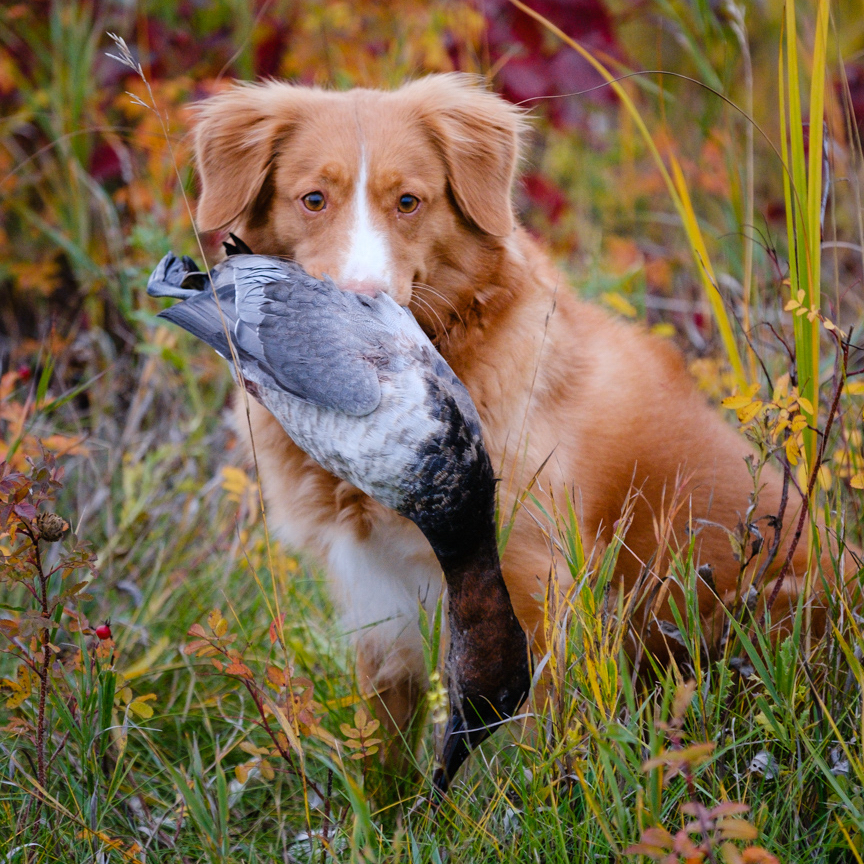
Tollers can work just like other waterfowl retrievers in the boat or blind, jump shooting, or upland hunting. To use them as tolling dogs, hunters hide on the shore and toss sticks or bumpers for the toller to fetch. Bounding in and out of the water, disappearing into the cover, the dogs’ bright color and wavy tail attracts the attention and interest of ducks rafted off shore.
Tollers are cheerful, playful, and intelligent. Like the IWS, the toller has a water-repellant double coat; but unlike the spaniel, it is an enthusiastic shedder. Tollers are high energy, but being eager to please, their love of work gives them a good outlet.
Myths Dispelled
Despite all those curls, there is no proof of poodle in the Irish water spaniel’s lineage. Similarly, there are no foxes in the toller’s breed development. Irish water spaniels are known to be minimal barkers. On the other hand, when excited, tollers vocalize with a unique high-pitched yelping screech known as the “toller scream.”
Choosing an Outlier Breed
Both breeds are agreeable family companions. Both are fairly rare, but because they haven’t been wildly popular in the show ring, the odds of finding breeders who have maintained their lines’ hunting and retrieving instincts is good.
Many waterfowlers select their breed of choice using purely practical criteria – what breed is best suited for what water, weather, boat, blind, field, or bird. Others combine practical considerations with an opportunity for self-expression. These outlier breeds, the Irish water spaniel and Nova Scotia duck tolling retriever, not only present intriguing looks and talents to the satisfy the nonconformist, they will work with all the dedication and delight of many far more familiar retrieving breeds.
Last modified: May 2, 2020


